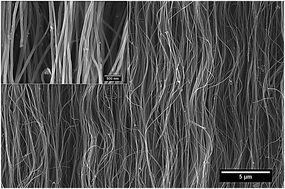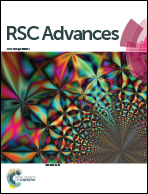Effect of electric field on creep and stress-relaxation behavior of carbon nanotube forests
Abstract
Carbon nanotube forests (CNTFs) are porous ensembles of vertically aligned carbon nanotubes, exhibiting excellent reversible compressibility and electric field tunable stress–strain response. Here, we report the effects of electric field on the time dependent mechanical behavior, namely creep and stress-relaxation, of CNTFs. Creep and stress-relaxation experiments were conducted under constant compressive stress and constant compressive strain, respectively, wherein variation of the strain and the stress, respectively, as functions of time were measured. Creep strain–time data of CNTFs showed a primary creep regime followed by a steady-state creep regime. The creep rate was substantially retarded upon application of electric field. The steady-state strain rate showed a power-law dependence on the stress; however, the stress exponent reduced when an electric field was applied. On other hand, electric field enhanced stress-relaxation in CNTFs, leading to a lower value of stress at a given time. However, the effect of electric field on the stress-relaxation reduced with compressive strain. Based on the Garofalo model of creep, a unified model for explaining the overall time dependent mechanical behavior of CNTFs and the observed experimental results was developed.


 Please wait while we load your content...
Please wait while we load your content...